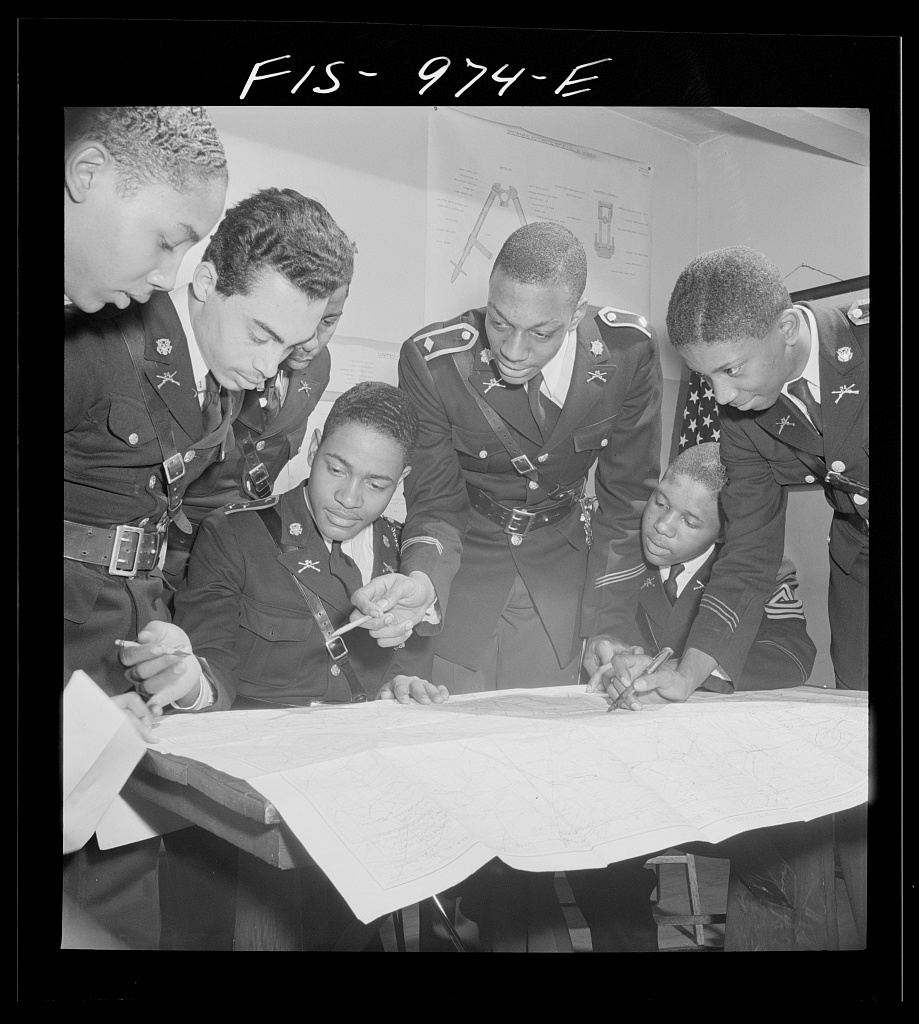
The Library of Congress teacher Primary Source Analysis Tool helps students learn the skills of inquiry. The Library of Congress Teachers page suggests prompts to analyze: maps, film, oral histories, newspapers, political cartoons, books and other printed texts, sheet music, photographs and prints, manuscripts, and sound recordings. http://www.loc.gov/teachers/usingprimarysources/guides.html
Students practice the steps of analysis until they begin to ask these questions every time they encounter a source. The first time students encounter the tool, it may help for them to analyze something they are already familiar with, such as an image of a familiar sports team. Though we emphasize a set process to support learning the process of thinking, Library of Congress staff note that the inquiry cycle works especially well when students start the cycle by asking questions. Students also need to learn to develop and identify inferences and observations for themselves.
Observe
At first, students should make no inferences about the primary source. Rather, they should address only the facts of what they see or hear. They must learn the difference between questioning what you see and making assumptions about what is happening. (For example, "Half the people are wearing big hats." Not yet, "These are cowboys.")
- What do you notice first?
- What kind of structures do you see?
- What do you notice about the people?
- Is there anything you notice because it is NOT there?
Reflect
NOW students can make inferences about what is happening in the primary source. Speculate on the purpose of structure and objects, and the activities and roles of the people. Follow up with, "What makes you say that?"–a non-threatening request for evidence.
- What is this place? When is it?
- What are these people doing? Why?
- Who created this source? Why did they write it? Photograph it? Record it?
- Who was their intended audience?
Question
Build on the questions that students already generated. Encourage them to delve deeper into the source. Always encourage them to question who made the source and why. Once students have generated a meaningful set of questions, brainstorm ways they might find answers to their questions. A key means to help students engage with content is to encourage them to imagine themselves in the source. Asking good questions is hard! It takes skill and practice. Analyze good guiding questions (such as from state standards) and encourage students to use them as models, but require students to generate their own. We highly recommend learning to apply the Question Formulation Technique.
- Is there anything confusing in this source? Anything that bothers you? What do you want to know more about?
- Choose a person in this source. What question would you ask them if you could?
- What would you ask the person who took the photo? Wrote the document? Made the map?
- What facts would help us make sense of this source?
Investigate
Wrap up the Observe-Reflect-Question sequence by having students consider whether and how the event represented by the primary source has impacted history. Help students figure out how they can find the answers to their questions. You might begin with the source information for the primary source–title, author/creator, date, and a URL for digital resources. Always do your best to record these details, plus a thumbnail image and short annotation, whenever you use primary sources in class.
Catalogue pages from authoritative collections such as the Library of Congress, typically provide some context and ideas for further research. (The photographer's name is highlighted in the sample at right.)
Guide students to judge which online resources are reliable–a substantial and ongoing challenge indeed!




